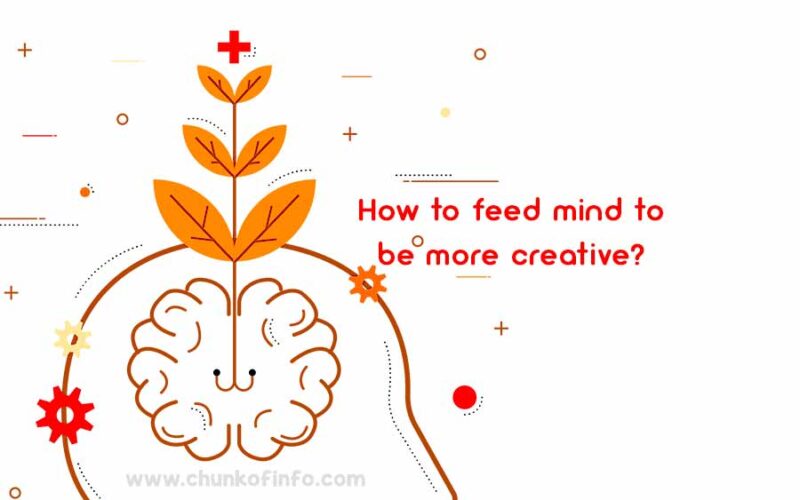How to feed your mind to be more creative? Do you really use your creative imagination to produce a novel published? Do you want to write an article of art that has already been executed? Sketch, sculpt, or carve a piece of purchased visual art?
Obviously, you don’t have to be a composer or an artisan to discover an original song or see colour and form in your thoughts. Perhaps you’ve had a spectacular moment on the sports field, such as a tremendous solo run, a piercing pass, or a spectacular goal shot from an improbable aspect.
The phenomena of creative imagination is fascinating since it results in the creation of something new and worthwhile. It entails perceiving potential beyond current limitations.
Table of Contents
How to feed your mind to be more creative?
This flash of insight is frequently vivid, and it can come in the shape of a great vision or a “seeing” of something new.
Archimedes’ ‘eureka moment,’ when he sprung from his bath after a leap of knowledge about and later gave birth to principle of Displacement
Typical creative imaginations experience
When we think “if only…” in everyday life, we may impulsively dream up alternatives to reality, and something fresh is conceived or a new viewpoint develops that throws light on the routine.
To come up with an innovative answer to any distinct practical difficulty of everyday living, imagination is definitely required.
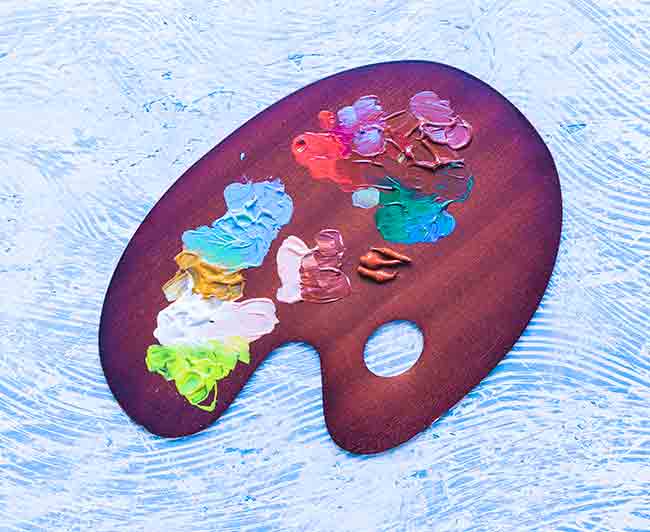
In everyday speech, one can be creative by being entertaining to amuse, saying something practical to help someone cope with a problem, or being original to pique someone’s curiosity.
So, how do you account for imaginative creativity? What is the source of it?
A humanist’s view of imaginative creativity.
The modern existence of social invention originated during the Renaissance and grew in prominence as an ideological movement during the Awakening. Creation began to be seen as originating from the individual’s skills rather than from Creator.
Humanism rose to prominence as a major ideological movement. This was a worldview that was profoundly human-centered, respecting the individual’s intelligence and accomplishments. A naturalistic mindset followed by the advancement of science and technologies.
Natural brain processes
Scientists frequently mistakenly believe that diverse thinking and wild mind are the same thing. Idea generation seeks a single, proper solution to an issue, whereas divergent thinking seeks several solutions to a single issue.
Brainstorming, according to contemporary cognitive psychology research, is a technique of creativity and imagination utilising natural brain mechanisms. Remembering, logic, perception, connection, and other functions are used in these. These processes take place in the background of our consciousness.
Scientists commonly believe that enlightenment or revelation is caused solely by brain activity. The pre-conscious processing of the creative thought breaks forward in conscious thought.
The discovery of Kekulé
As a result, many scientists nowadays believe that creative imagination is only the product of a combination of one’s present information and knowledge obtained from the outside environment.
Kekulé’s flash of light concerning the ring structure of the benzene structure is one example that is supposed to represent this theory about creative imagination. The finding paved the way for aromatic compound chemistry. When Kekulé was dozing, he saw rows of atoms moving in a snake-like pattern.
One of the snakes followed after its tail and grabbed it, producing a pattern.
Materialistic analysts looked for additional factors that could have influenced the outcome. Kekulé honed his visual sensibility as an architect before becoming a chemist. They speculated that he might have spent several hours visiting the zoo and the afternoon seeing a dance performance.
They believe that his novel insight was influenced by these alleged random accidental occurrences.
A transcendental view of imaginative creativity
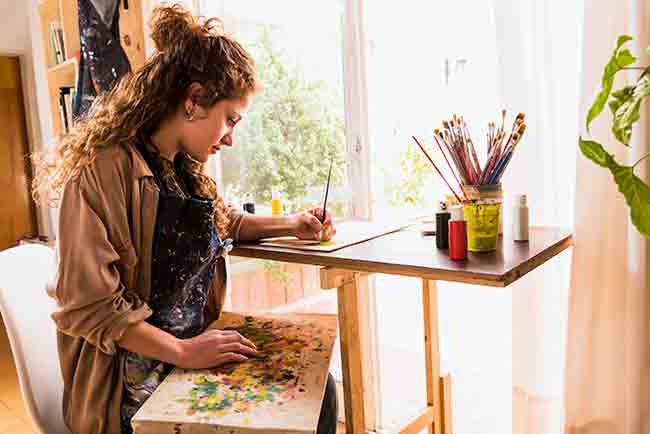
Another viewpoint is that creativity is also derived from something invisible outside of the individual. To be inspired is to take in the life force. We may be moved and roused from time to time. However, we are unsure where the motivations comes from.
I believe I understand why. People who do not believe in any inflow from a higher plane when they are focused on earth matters.
Muses were frequently regarded by the ancient Greeks as conduits for divine inspiration. Later, the Greeks and Romans summoned the idea of an exogenous creative “demon” or “genius,” which was associated with the holy or heavenly.
Effort and imaginative creativity
“In my artistic process, it’s 90 percent effort and barely 10% inspiration,” says the author. (Rosabeth Moss Kanter, Harvard Business School Professor)
While inspiration and effort are not synonymous, effort is a necessary prerequisite for inspiration, as it prepares the mind for an innovative encounter. Furthermore, research indicates that creative ideation is derived from open thought.
This begs a question of whether innovation necessitates human drive to be open to and action on an era of digital possibilities. We can’t hope to collect more if we wipe away wonderful things that are flowing through us; the good must first pour though us into actions.
You get more out of anything if you put more effort into it. This is not the same as having your own objective and wishing things your way, or leaping to reasonable conclusions on your own views. Being judgemental and pursuing personal gain are thus barriers to creation.
The spiritual realm
According to Spiritual Leader Saint Rampal Ji Maharaj, human souls are rare things which this body is only obtained after 84 lakhs birth and death. Destiny and life are already decided before birth. In which time what will happen to you, everything this is well planned by “Kaal”. Everything is transitory here but people or human souls keen to get these materialistic. They keep struggling to be achievers by at last they get nothing only emptiness. As materialistic kinds of stuff are transitory. They value nothing. The worth keeping is true spirituality and worship for salvation by worshiping Lord Kabir.
The spiritual realm Our sensory awareness is flooded with ideologies as a result of their existence.
How receptive are you to the sensation of imaginative creativity? Is it possible for inspiration to originate from a higher plane? And, if yes, what are the implications of this knowledge for you individually?
Stephen Russell-Lacy has worked for man as a clinical psychologist specializing in cognitive-behavioral treatment on suffering and its treatment.
Sufferings cannot be erased easily or never hence spirituality is good healer.
Know how to erase the human sufferings?
What is the Best Way to Improve a Great Mind?
When man’s thinking is perfected, then — and only then — will the body be capable of expressing itself fully.
That was written by Charles F. Haanel. And he was absolutely correct.
Because your thinking is the starting point for just about everything.
So, how can you train your mind to be perfect?
You gain knowledge.
What’s more, how do you gain knowledge?
While we can gain from our experiences and tutors, reading is the great way to know.
Read a lot of books. Fantastic novels. The most excellent book.
However what you learn will shape you.
So go out and discover some amazing novels to read. Nourish your mind on a regular basis. Reading may provide you with……inspiration……ideas……knowledge……entertainment… and facts.
Don’t waste your time reading stuff that aren’t good for your head. If you waste your time reading nonsense, you suffer the consequences of damaging your most valuable and only instrument.
That’s not to suggest you shouldn’t have fun, but let’s face it, some people just care about their amusement needs at the expense of everything.

Similarly, while staying updated about current affairs is important, there comes a point when gathering knowledge (through newspapers and media sites) becomes equivalent to gossiping. Recognize the differences.
Here’s how you can mimic your study habit for maximum efficacy as a roadmap.
35 percent Self-Help/Inspiration
30 percent education/knowledge
Newspapers and information accounted for 15% of the total.
20% to entertainment.
Biography and autobiography will connect you to lifestyles and cultures, both inspiring and informing. With each new individual you meet, you will gain a new perspective on the world.
When you study history, you will notice that the reality is frequently full of surprises.
And there’s a whole lot extra…
If you already own a company, you should read books on topics such as taxation and marketing.
Are you an author? Then reading style books might be beneficial.
Bone up on your math knowledge.
You exist in a world where data are transmitted at the speed of light. From every direction, information flows into your existence. You have access to libraries, the Online world, and a variety of other technologies.
Load your tumbler with the things you want to study and understand.
As you think, so will you act.
The brain takes the initiative, and the body responds.
That should be firmly embedded in your mind.
Put it to the test on your own.
Start by reading amazing books and motivational books.
Why for an Artist, money is not everything?
What is the difference between an a fine artist, an artist, an artisan, and a craftsman?
An artist is a person who develops goods for commercial use. Graphic designers and book illustrators are two examples.
Fine Artist-An innate aptitude for creating unique, visually stunning, and aesthetically pleasing works of art for aesthetic purposes. Oil paintings and hand sculptures are two examples.
Craftsman-As a tradesman or craftsman, he or she duplicates functional products. Builders build houses, and artisans construct furniture, for example.

People frequently use these phrases on their own terms rather than by definition. These words are frequently misused, resulting in misunderstanding.
Decent jobs is critical for every artist or artisan. During times of economic prosperity, fine painters can find work. Their designs may be one or unique, and the value will be exorbitant.
Irrespective of the economic, Craftsman mimics pragmatic art and work every year. In comparison to possessing original jewellery, a statues, or an oil painting, people require housing, apparel, footwear, equipment, automobiles, furnishings, and much more.
Artists and artisans must be entrepreneurs who run their own businesses or work on a contractual basis. In larger organisations, craftsmen or tradesmen are paid.
Why are artists and artisans having such a hard time making money?
- They avoid discussing money since it is considered impolite or unimportant.
- There is a lack of financial savvy, interest, prestige, or financial management.
- Money is seen as the source of all evil.
- It is more vital to create art or craftwork.
- Money has no value because love, environmental preservation, and global peace are more vital.
- As artists, their communities and families make them nervous. They seem to have had fun and do not appear to be working.
- Money is unimportant, and they never appear to have enough of it to appreciate its worth.
- A lack of economic or money understanding, as well as a comprehension of how markets work. Starting to feel meaninglessness or regret as a result of not being able to make money.
- The fear of not having enough money.
- Uneasy feelings about demanding money.
- No understanding of how to value or sell an item.
- A lack of self-esteem and an inability to see our own merits.
- We are hyper-negative of our work because we notice defects in it. We can’t perceive or grasp that purchasers are interested in the product’s beauty or potential for personal use, not its defects.
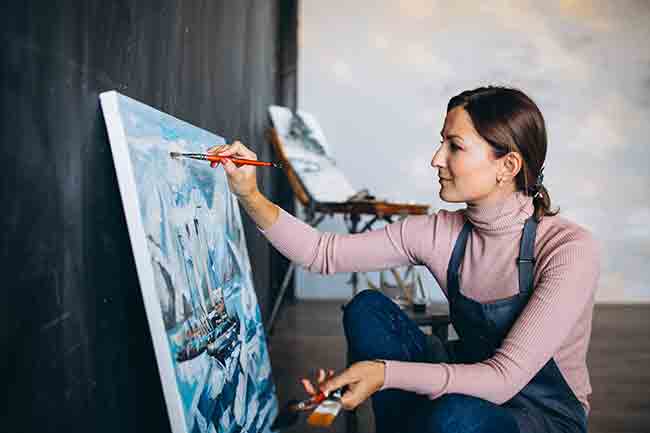
· Uneasy about selling a portion of our creation because it makes us feel as if we’ve put a value on ourselves and offered our souls to the demon.
· To avoid appearing greedy, undercharge the price of an item.
· Poor ability to negotiate with prospective consumers.
· Despise or despise completing paperwork for documenting our revenues and expenses, income tax forms, and other financial problems
Artists and craftspeople will be unable to make a decent living from their competencies and abilities due to these attitudes, concerns, or a lack of information.
The Artist’s Mind
Chiamaka Okenwa, an art student, addresses the issue, “What goes through an artist’s head before the development of a great masterwork?” This is a question that everyone has, particularly in today’s volatile situation when one’s identification can easily be misplaced.
The solution to this query is what I came out to discover during my visit to Denk Spaces‘ exhibition ‘Identities.’ The exhibiting artist Erasmus Onyishi has an exhibit at the gallery’s entryway. What seemed to be a tangle of wires and debris at first turned out to be a colony of ants marching up the wall after closer inspection.
Publicly Shut, a mixed media artwork, may have been the catalyst for us to consider the possibility of other types of art than reality, an idea we had previously dismissed.
As soon as I stepped inside, my eyes were filled with awe. Each piece was a vibrant and bright depiction of the same, unique theme: identification. Pigment, line, texture, and shape were used by the presenting artists to identify themselves in their artwork, and each arts attracted to us in various ways.
Our heritage is our dignity, as one of Henry Eghosa’s emotive pieces showing a woman in the process of preparing in traditional clothing seemed to convey. In his elegant depiction of an elephant herd, Stephen Osuchukwu highlighted the matriarch elephant, whose leading role is nearly associated with its reputation.
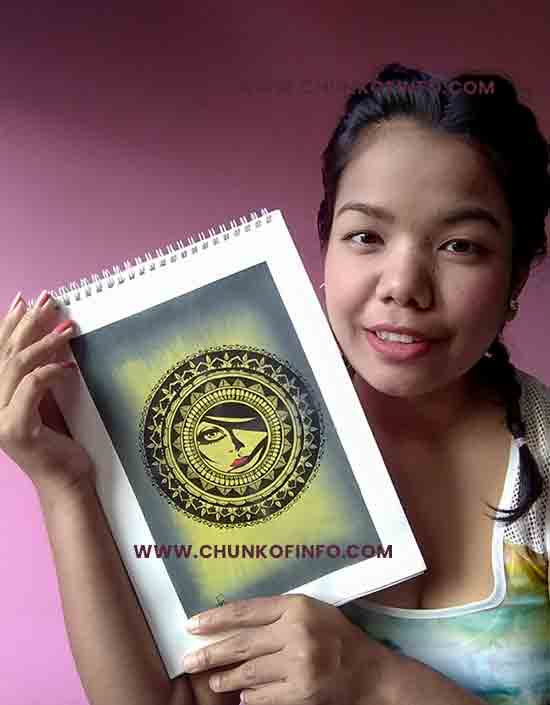
This female cow is the herd’s eldest and largest member, and she is in charge of leading the elephants. Her massive shoulders hold the key to their existence. When we are given leadership roles, we understand that we are, perhaps, a matriarch.
In his book Beauty Deeper than Cosmetics II, Obinna Makata encourages us to recognize the importance of maintaining our own distinct identities in a globe where society prescribes what we should dress, how we should appear, and, eventually, who we are.
Of Racial and Identification, another of his works teaches us Africans that we do not genuinely correspond to the label [Black], but that our personalities are rainbow of color, because each of us has a spray of something unique. His creative use of Ankara accentuates his uniqueness.
We acquire our own attractiveness from our differences in personalities, just as each Ankara design obtains its beauty from its distinctive form.
Promise O’nali, whose book style would place him in the most remote corners of the globe, gives us a different perspective on the phrase “identification.” Because, at the end of the day, who are we? That’s something to ponder for a long time.
In a serene and straightforward style, his paintings invite the observer to contemplate the complexity of man’s life’s journey, as well as the ongoing effort to keep his authentic identity.
At the conclusion of this extremely exciting and eye-opening exhibition, I felt like I was on another planet. One fundamental principle had been learned. “Art is always interwoven in our lives… It opens the door to everything,” Mr. Nnoli says.
And I’ve been tremendously encouraged to unlock those doorways and strive for the enchantment in new and inventive methods.
Be yourself, appreciate yourself, and make the best decision you can.
Discovering time to enjoy some alone as the old year draws to a close and the new one begins is a fantastic present to oneself.
I was doing just that yesterday afternoon, when the setting sun turned the wintry treetops golden beyond my windows. I managed to clear some papers on the bookcase behind my desk, savoring the twilight time, and came across three statements that I’d stored to use one day.
“What better day than now!” I thought… so here they are:
Be who you are and say what you feel, because those who mind don’t matter and those who matter don’t mind. Dr. Seuss
Self-respect is the fruit of discipline; the sense of dignity grows with the ability to say no to oneself. Abraham Joshua Heschel
I am only one; but still I am one. I cannot do everything, but I still can do something. I will not refuse to do the something I can do. Helen Keller
What a feast of knowledge to ponder and carry into the new year – or, for that matter, a new day! And it’s worth noting that each insight has something to do with limitations. One of my favorite topics in managing time is setting limits.
But how do these quotations relate to the concept of limits?
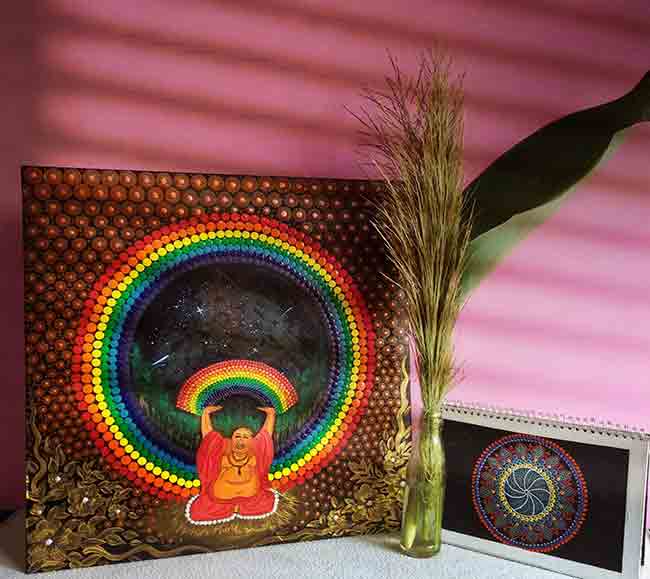
So, the more at content and comfortable you are with your limits, the more at peace and confidence you will be with sharing yourself, your thoughts, and your emotions with others. That’s because when you have solid, healthy limits, you know you’ll be ok no matter what happens.
Also Read
Origin of Anime and reason for its popularity worldwide
So, when your limits are solid and apparent, you know deep down that yet another person’s feelings or opinions about you are theirs alone, and that they say nothing about you. You can communicate truthfully when you’re confident in yourself, and you can give others the same opportunity.
Not only that, but just how you spent your energy is determined by what you vote yes to and what you choose to no. These no’s and yes’s serve as limits. Saying no to one thing allows you to concentrate more completely on another. This is a crucial ability for your time management since it allows you to set boundaries.
Ultimately, boundaries define the line between you and the other people. You are the one and only. Understanding this gives you the confidence to achieve the best you can.
It’s a common misperception that borders are barriers. In actuality, understanding yourselves and your limitations enables us to focus more effectively in the time you have and interact more honestly… it’s the soul approach!
